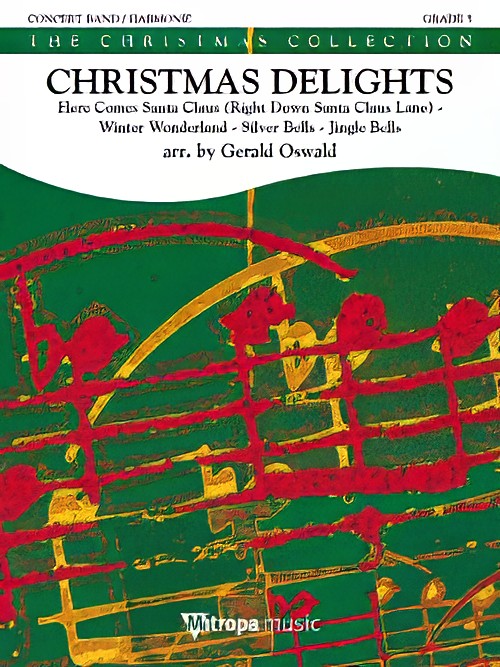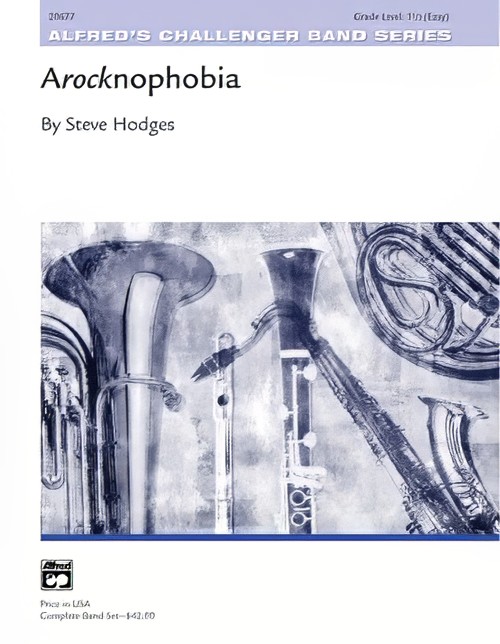Results
-
 £104.99
£104.99Christmas Delights (Concert Band - Score and Parts) - Oswald, Gerald
Are you tired of hearing the same Christmas tunes over and over again? Well, try this new medley by Gerald Oswald in which he flavours 'Silver Bells', 'Here Comes Santa Claus', 'Winter Wonderland' and 'Jingle Bells' in an adventurous way!Duration: 6.15
Estimated dispatch 7-14 working days
-
 £48.95
£48.95Arocknophobia (Concert Band - Score and Parts) - Hodges, Steve
Your students will have no fear of playing this piece-in fact, they'll probably ask you to play it over and over again! This rock-inspired piece has a contagious melody and driving backbeat that will keep your band and the audience entertained. Duration: 2.15
Estimated dispatch 7-14 working days
-
 £49.50
£49.50Yankee Doodle (Concert Band - Score and Parts)
A lovely little march by James Swearingen that is made to order for elementary level bands. Starting out with just the woodwinds and snare drum, this tuneful arrangement is a gem. As usual, Swearingen's melodic and rhythmic touches make this a piece you'll play over and over for years to come. Full Score.
Estimated dispatch 7-14 working days
-
 £104.99
£104.99Christmas Delights
Are you tired of hearing the same Christmas tunes over and over again? Well, try this new medley by Gerald Oswald in which he flavours 'Silver Bells', 'Here Comes Santa Claus', 'Winter Wonderland' and 'Jingle Bells' in an adventurous way!
Estimated dispatch 7-14 working days
-
£65.99
Liberty - James Swearingen
A lovely little march by James Swearingen that is made to order for elementary level bands. Starting out with just the woodwinds and snare drum, this tuneful arrangement is a gem. As usual, Swearingen's melodic and rhythmic touches make this a piece you'll play over and over for years to come. Full Score.
Estimated dispatch 7-14 working days
-
£101.50
Our Own Red, White and Blue - Henry Fillmore
This catchy little tune from march composer Henry Fillmore is one that you will be humming over and over again. Though one of his lesser known titles, it is unique for Fillmore marches as it is very playable compared to most of his barn burning marches and it does not contain the usual modulation or trio. This accessible march is sure to be a favorite for your band.
Estimated dispatch 7-14 working days
-
 £71.50
£71.50Bardic Air and Reel - Larry Clark
Sound larger than life with this brilliantly scored overture for developing band. Beautifully expressive playing with ample opportunity to teach grace-notes and traditional "snaps", Larry has crafted an accessible work for young band that is reminiscent of great band works of the past. Your students will ask to play this one over and over!
Estimated dispatch 7-14 working days
-
 £71.50
£71.50Sea Adventure - John M Pasternak
Imagine drama out on the high seas in this exciting and fun-to-play work by composer John M. Pasternak. John's music always weaves a tale, and this one is no different. Students are going to ask to play this one over and over.
Estimated dispatch 7-14 working days
-
 £48.50
£48.50Call To Glory - Rob Romeyn
Your young band will sound beyond their years with this solidly scored concert opener. Bold and commanding with a memorable melody the students will want to practice over and over. Varied styles and textures make this perfect for concert and festival use. A powerful piece for any performance!
Estimated dispatch 7-14 working days
-
£69.96
Scaff! - Score and Parts - Hector Berlioz
Scaff! is an adaptation of the famous 4th movement of the Symphonie Fantastique by Berlioz in swing style. The story of the March to the Scaffold is a tragic one where the subject, in a depressive state over a love interest, overdoses on opium. He dreams that he has killed his beloved and after his procession to the scaffold is now witnessing his own death. This arrangement doesn't really reflect those tragic circumstances but instead redresses this great tune into a toe-tapping big band number.
Estimated dispatch 7-14 working days
